What happens when the largest objects meet their twins?
From asteroids to planets to stars and more, doubling what you’ve got can be disastrous!
“Art has a double face, of expression and illusion, just like science has a double face: the reality of error and the phantom of truth.” –Publilius Syrus
Imagine what’s out there in the Universe, from the tiniest dust grains up to the most ultra-massive black holes and everything in between. Now, imagine taking each one of those things you thought up, and doubling it. I don’t mean doubling its size, or its mass, or any other physical property of the object itself.
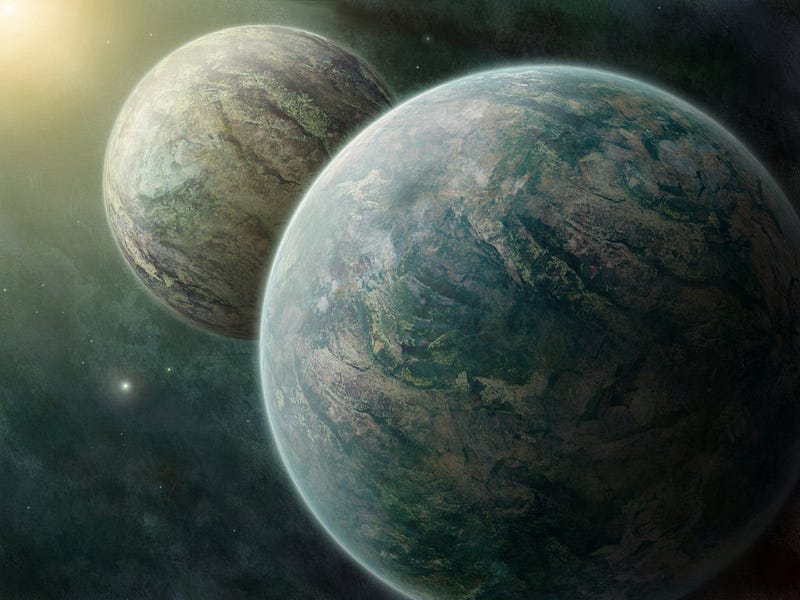
Instead, I mean taking any object you can think of and letting it interact with another one that’s identical to itself.
Let’s start small and move up in mass, because that way we can make sure we don’t miss out on anything. On the smallest scales in space, we can turn to small asteroids and meteoroids, and ask what happens if we allow one to meet with another that’s practically its twin.
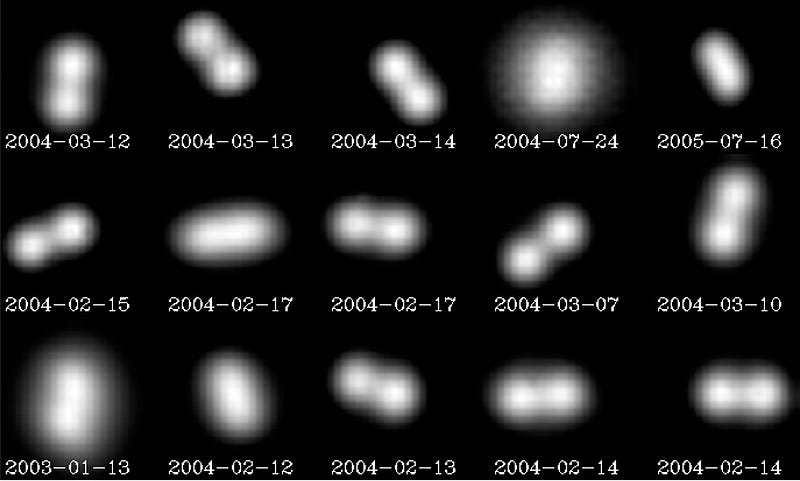
For these very small sources of mass and gravity, meeting one another results in the simplest scenario imaginable: these two rocks come in contact with one another and remain there. Gravitation (and all other forces) are insufficient to affect any further changes. This is why, when we take a close look at the smaller asteroids like 25143 Itokawa, we find that they’re composed of piles of rubble or pebble-and-dust-like components.
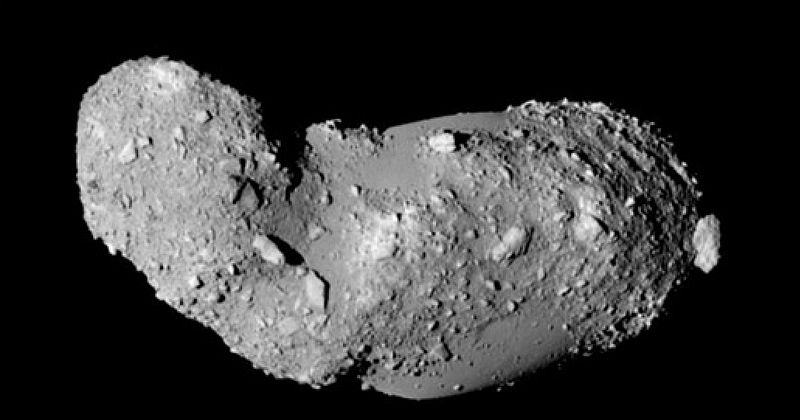
We’d have to go to much larger masses for anything different to occur.
But if we do — if we start talking about asteroids about 100 km or larger in size — when they meet one another, some very interesting physics starts to take place.

If your gravitational mass is large enough, then the tidal forces — primarily because the gravitational force acting on the near side is so much greater than the force attracting the far side — can distort and deform your rocky body. Over time, these two masses will spiral in towards each other and merge, as a sufficient amount of gravity will now exist to simply create one larger asteroid. It’s very likely that this merger of asteroids is how the first dwarf planet ever discovered — Ceres — was formed.

What about larger bodies, like rocky planets? As it turns out, not a whole lot happens that’s different from the case of two large asteroids. Once you’re in hydrostatic equilibrium — which is a fancy way of saying an object has enough gravity to pull itself into a sphere or whatever shape a water drop would have if it were spinning at that rate — you’re going to deform and merge together with the new object to form a single object in a new hydrostatic equilibrium.
The biggest difference, in fact, will be due to the fact that you’re very likely to start off with a layered planet!
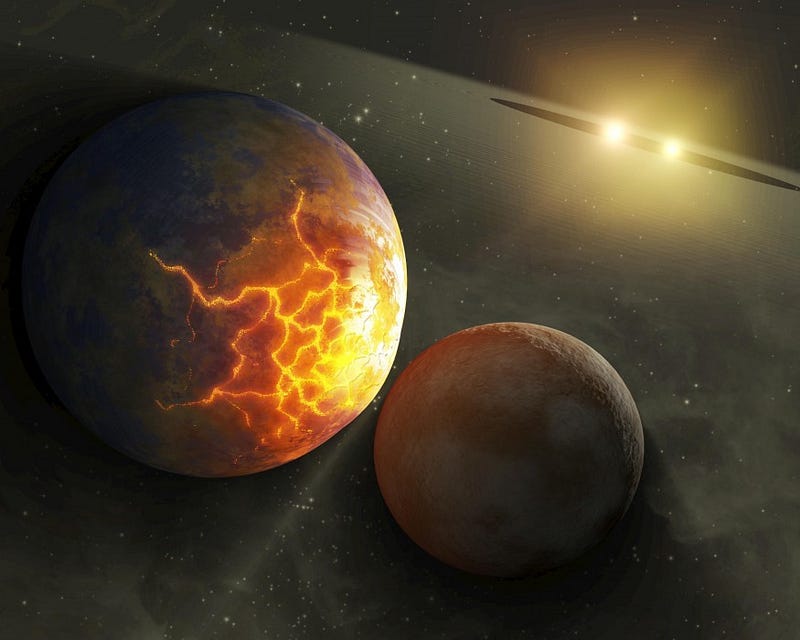
Earthquakes and volcanoes, and a tremendous disruption of both planets will occur before they completely merge together, forming one new rocky world that’s equal in mass to the combined mass of both progenitor planets.
But things get changed up a bit if you merge two gas giants. And I say that because it depends on which two gas giants you merged. If you merged two Uranus-like objects, you’d get a planet double the mass and significantly larger in size than Uranus. But if you merged two Jupiter-like objects, you’d get a planet double the mass but no bigger than Jupiter itself!
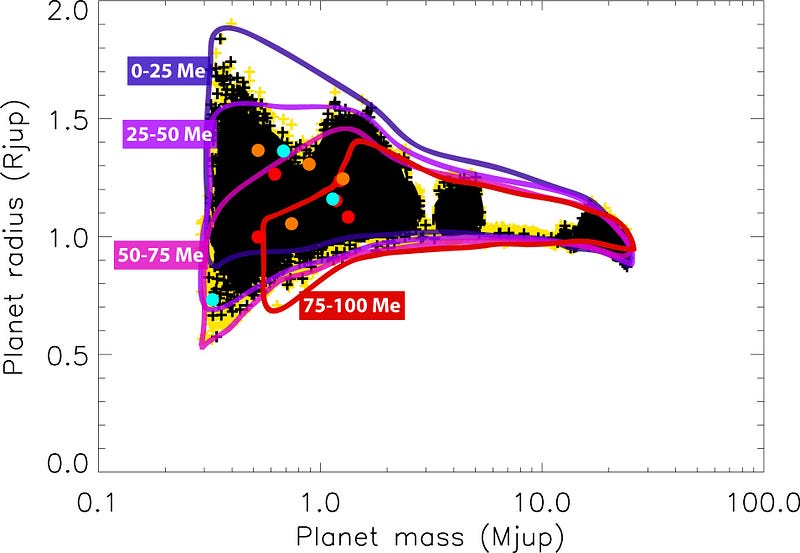
If you have twice the amount of mass in a given space, the gravitational energy confining any portion of it is also twice as great. Beyond a certain point, if you put more and more mass into a given space, the size of the object actually begins to shrink!
And this reaches a tipping point at a few dozen times the mass of Jupiter. Because if you merged two planets that were 35 times the mass of Jupiter (although each one would probably be a brown dwarf by that point), what you’d wind up with — when the merger was complete — was enough mass to ignite hydrogen fusion in your object’s core, and you’ll have a star on your hands!
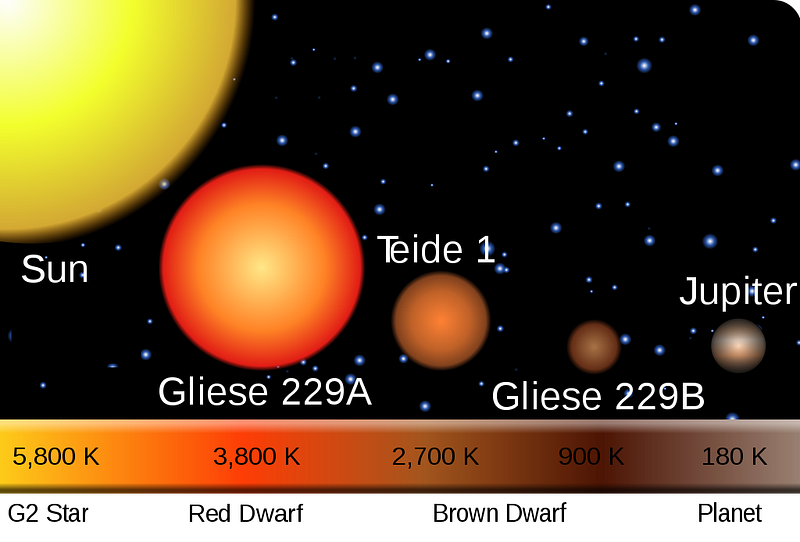
You’ll have stepped up to form a true red dwarf, an M-class star that is the longest-lived class of star in the Universe, with a maximum lifetime of more than 100 trillion years, or some 10,000 times the present age of the Universe. The more massive, bluer stars burn through their fuel quite quickly, while the less massive, cooler red ones take much longer. After about 10 billion years, all the O, B, and A-class stars as well as the brighter of the F-class stars (just one class brighter than our Sun) will have burned out.
But when we look at the globular star clusters that have been around for almost as long as the Universe has — up to 13 billion years or so, like Messier 56— we, in fact, find these blue stars that shouldn’t be there!
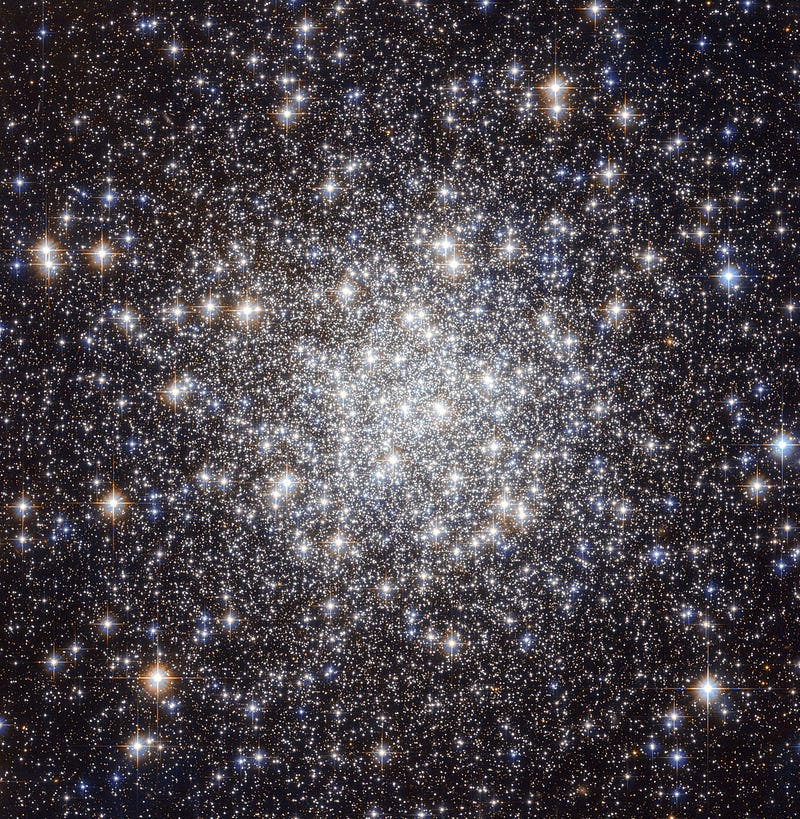
What’s going on? Just like planets can merge, stars can, too! These bright, blue stars you see in the cluster are known as blue straggler stars, and they occur when smaller, lower mass stars find each other, interact and merge. Over time, the core of the star becomes more massive and burns hotter, and therefore the star increases in temperature and becomes bluer in color.
In fact, you can take almost any two equal-mass stars and merge them together to create a hotter, bluer single star that will have a much shorter lifetime.
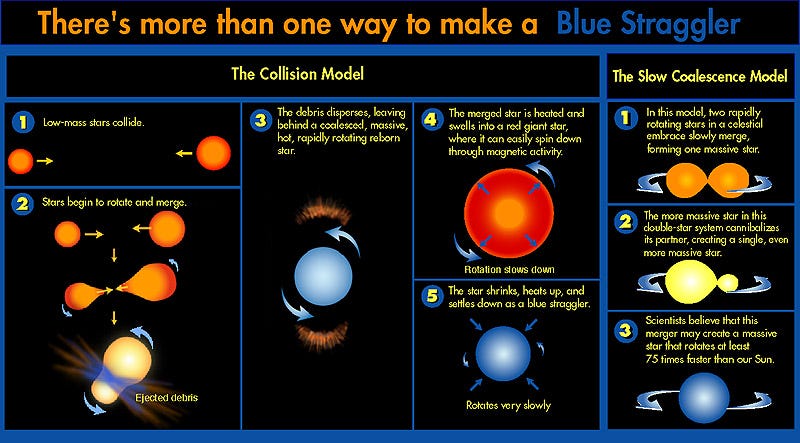
But not all objects this massive that merge together will form a star. You see, the larger-mass stars — the ones that burn through their fuel relatively quickly — wind up dying in spectacular fashion!
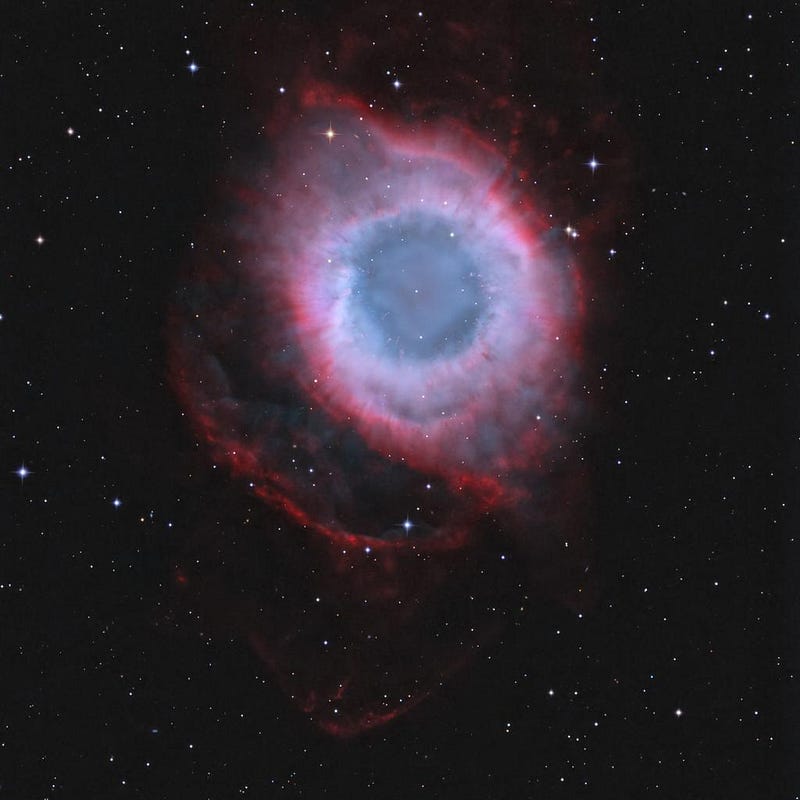
Sun-like stars, or stars up to about 400% the mass of our Sun, will wind up blowing off their outer layers in a planetary nebula, recycling hydrogen, helium and smaller amounts of heavier elements back into the Universe. But their cores are what we’re interested in right now. Because even as the outer layers are expelled, the inner layers of the star contract down to form a white dwarf: an object comparable in mass to our Sun but only the physical size of the planet Earth!
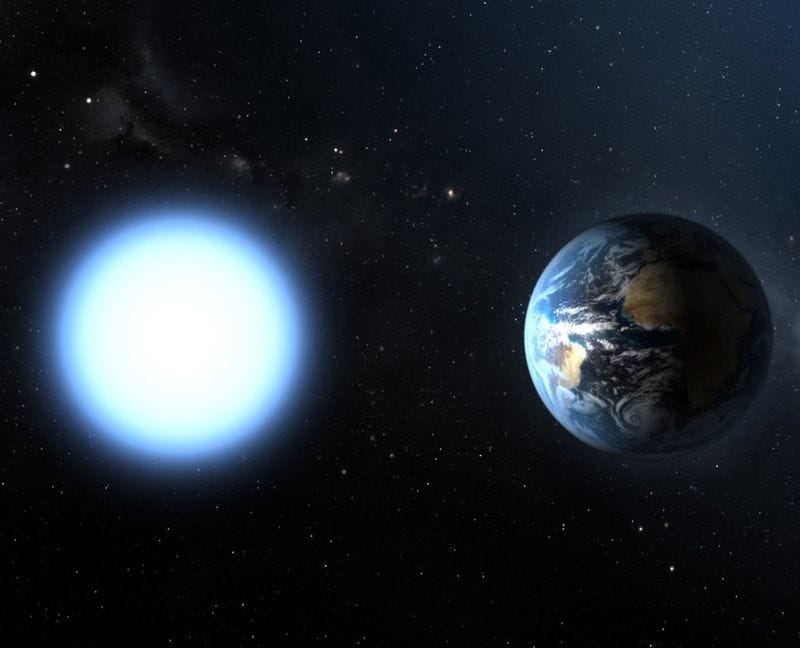
These ultra-dense collections of atoms are at insufficient temperatures for nuclear fusion to further ignite, but don’t quite have enough gravitation on their own to compress down to a smaller size or a denser state of matter.
But if you get two white dwarfs together, all of that changes, and it does so in spectacular fashion!
They inspiral, with their orbits decaying due to gravitational radiation. In fact, the closest white dwarf pair ever was just recently discovered, with two white dwarfs separated by less than the Sun’s diameter. In a matter of just a few million years, these dwarfs will merge. The additional mass in that tiny region of space will give enough extra force to ignite nuclear fusion in these dwarfs, causing a Type Ia supernova that rips both stars apart, leaving nothing behind in a catastrophic, runaway reaction!
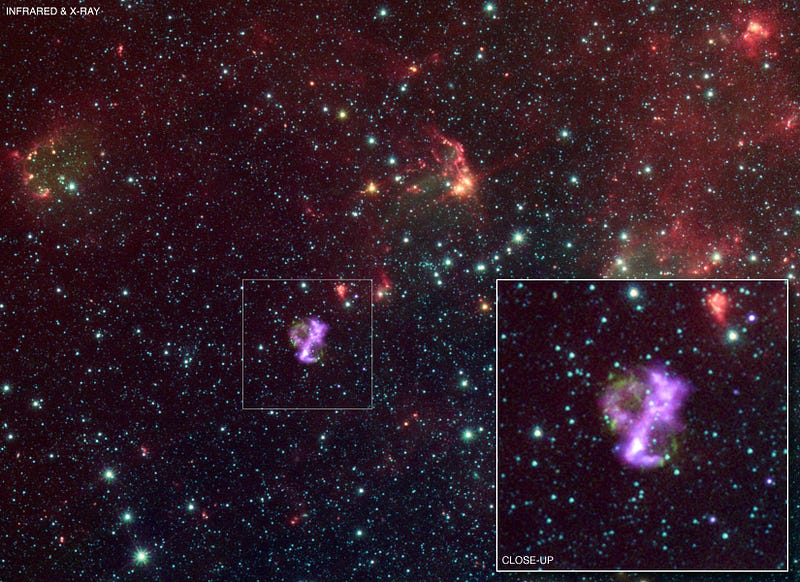
On the other hand, even more massive stars end their lives in Type II supernovae, leaving either a neutron star at their core — an object up to 2 or 3 times as massive as the Sun but only a few kilometers in diameter — or a black hole for the most massive ones!
But when two neutron stars merge, there’s nothing left to “fuse” at all.
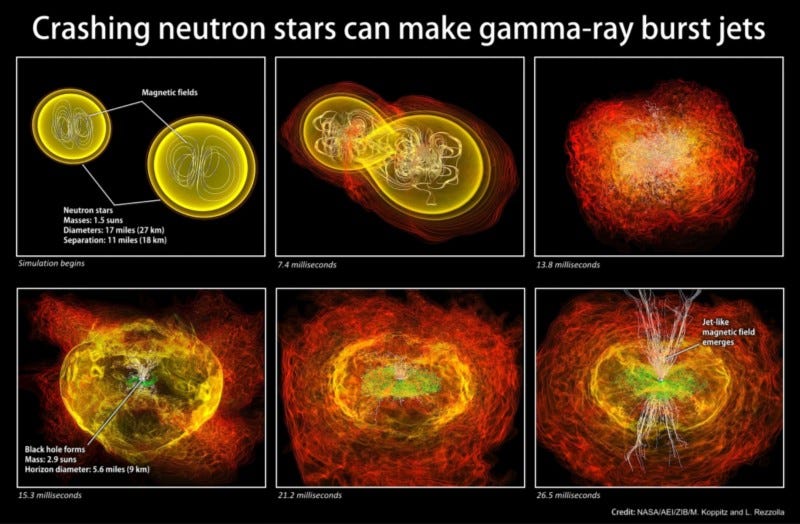
Instead, a few percent of the mass gets ejected as the heaviest atomic nuclei found in the periodic table, but the rest of the two neutron stars merge into a black hole, emitting a gamma-ray burst!
And finally, what happens when two black holes merge? No matter how small or how massive they are, all black holes have accretion disks around them.
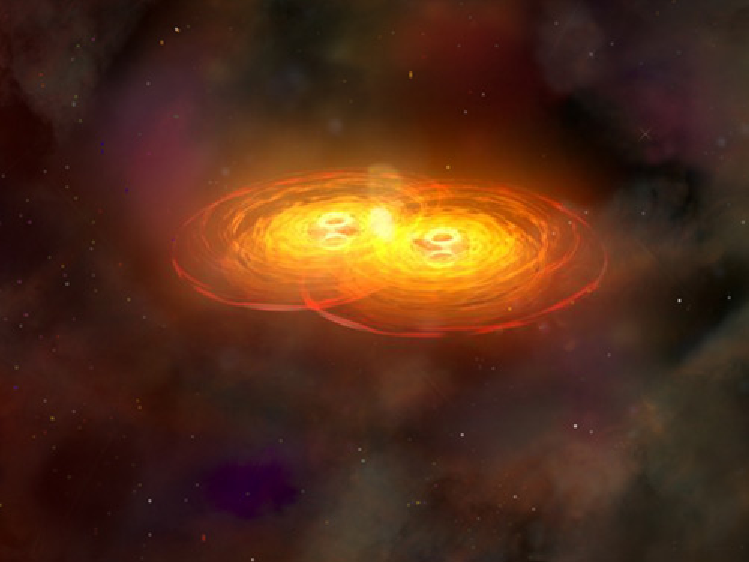
And whenever any matter merges with a black hole, a large fraction of it will get ionized, accelerated and emitted in two bipolar jets around the black hole itself. If it’s a small black hole, it creates what’s known as a microquasar, a larger black hole creates an AGN or an active galaxy, while the largest ones can create a quasar!
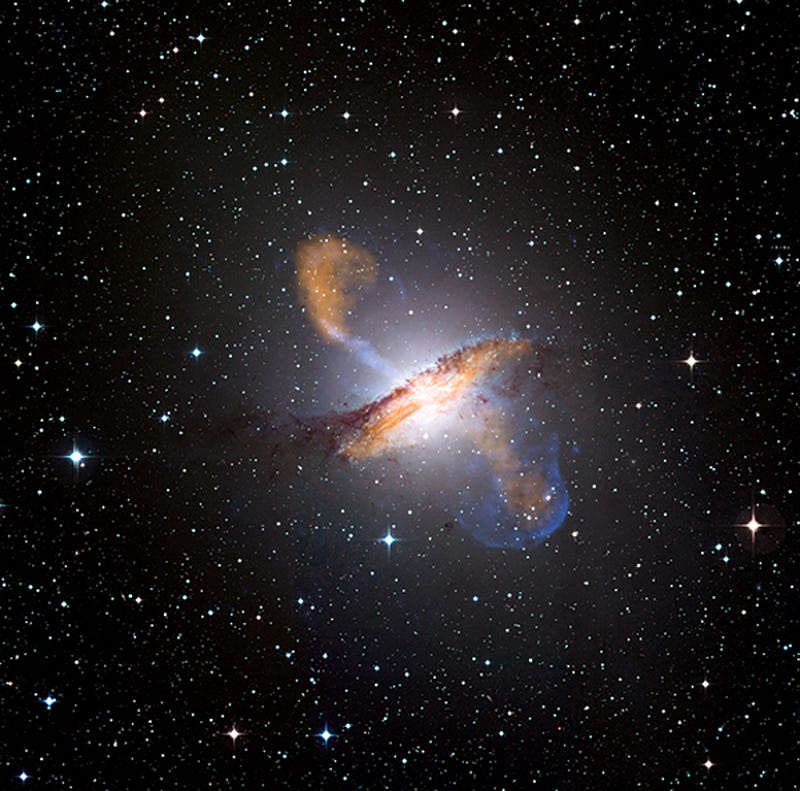
So if you want to merge two identical objects, do so at your own peril. For safety’s sake, you’re better off sticking to the lowest mass ones, or the fireworks are bound to be spectacular!
Enjoyed it? Leave your comment at the Starts With A Bang forum on Scienceblogs!





